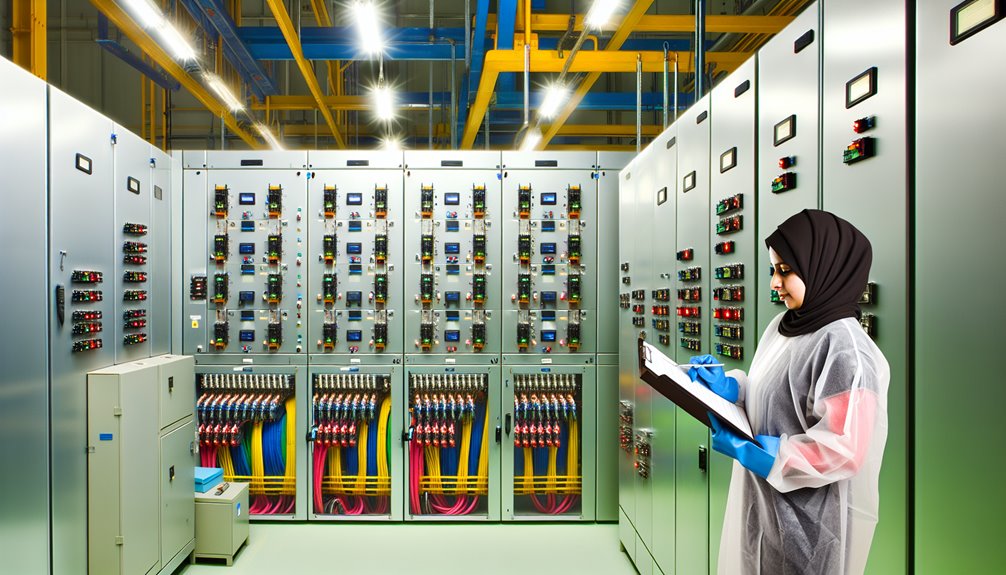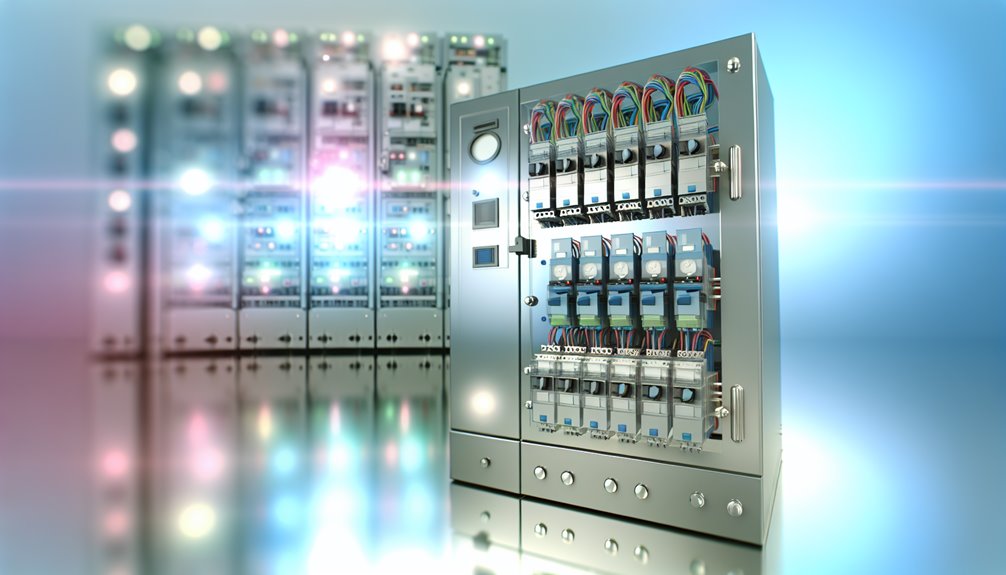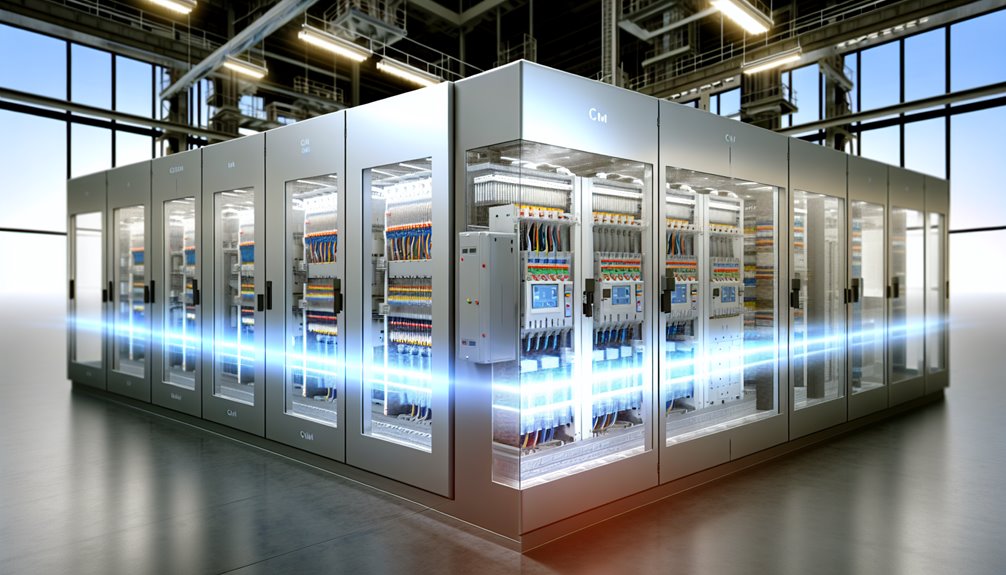When your project demands more than off-the-shelf power solutions, custom low-voltage switchgear becomes the key to safety, reliability, and efficiency.
In today’s fast-evolving industrial and commercial environments, the demand for custom low-voltage switchgear has never been greater. Standardized equipment often falls short when projects involve unique layouts, space limitations, or specialized operational requirements. That’s where custom solutions step in—offering tailored configurations, advanced safety features, and smart integration options to meet the exact needs of a facility.
At Conya Group, we’ve been designing and manufacturing low voltage switchgear for more than three decades. Our expertise in customization ensures that every project—whether in manufacturing plants, commercial complexes, or infrastructure developments—receives reliable, compliant, and future-ready power distribution solutions.
This guide will walk you through everything you need to know about custom low voltage switchgear.

Every facility has its own unique challenges. Standard switchgear might cover the basics, but when your operation requires specific layouts, advanced monitoring, or higher safety standards, custom low-voltage switchgear becomes the smarter choice. Here’s why:
No two projects are alike. Space constraints, building layouts, or specialized processes often demand tailor-made configurations that standard switchgear can’t provide. Custom designs ensure a perfect fit for your environment.
Custom switchgear allows for precise management of downstream equipment, from motors to HVAC systems. This ensures maximum protection, improved reliability, and seamless operation.
Today’s facilities rely on smart systems. Custom switchgear can integrate with SCADA, IoT, and other digital platforms—providing real-time data, remote control, and advanced fault detection to reduce downtime.
Different applications require different protection devices. With custom switchgear, you can select the exact breakers, disconnectors, meters, and relays that match your operational needs.
Understanding the essential components of custom low voltage switchgear is critical for buyers seeking reliable, efficient, and safe power distribution. Each component serves a distinct function, contributing to the overall protection, control, and performance of the system.
Circuit breakers are designed to automatically interrupt fault currents, protecting circuits and connected equipment from damage. They are a fundamental safety feature in any switchgear system. Depending on load requirements and system design, options include air circuit breakers (ACBs) and molded case circuit breakers (MCCBs). Choosing the right type ensures optimal protection and operational reliability.
Fuses provide overcurrent protection by opening a circuit when the current exceeds safe levels. Though simple in design, fuses are highly reliable and act as a first line of defense against electrical faults. Their correct specification is essential to safeguard both equipment and personnel.
Contactors control the connection and disconnection of electrical circuits, often for motors and other high-load equipment. They ensure smooth operation of machinery while preventing overloads, making them a vital component in industrial and commercial power systems.
Disconnect switches allow circuits to be safely isolated during maintenance or emergency situations. They are critical for ensuring personnel safety and protecting sensitive equipment from accidental energization or faults.
Meters within the switchgear monitor key electrical parameters such as voltage, current, and power factor, providing visibility into system performance. Protection relays detect faults and trigger corrective actions, enhancing the reliability and safety of the electrical network. Together, these devices allow operators to maintain control and quickly respond to abnormal conditions.
For more complex or unique applications, custom switchgear can include advanced monitoring devices, solid-state protection units, or other non-standard control devices. These specialized components enable a tailored solution that precisely matches the operational and safety requirements of the facility.tion of components underscores the effectiveness of modern electrical distribution systems.

One of the key advantages of choosing custom low voltage switchgear is the ability to tailor it to the specific needs of your facility. Customization ensures that the equipment not only fits the operational requirements but also enhances safety, efficiency, and long-term adaptability.
Custom switchgear allows for flexible component layouts that fit unique facility spaces and workflows. Modular designs make it easier to expand the system in the future, simplify maintenance, and accommodate evolving operational needs without requiring a complete redesign.
With custom solutions, manufacturers can incorporate specialized protection relays and solid-state devices that align precisely with your system’s requirements. Adjustable trip settings, arc protection, and fault monitoring enhance safety and ensure the reliability of your electrical network.
Custom switchgear can integrate seamlessly with SCADA systems, energy monitoring devices, and automated controls. This level of integration provides real-time insights into system performance, enables remote management, and helps reduce downtime through early detection of issues.
Depending on the application, custom assemblies may include non-standard breakers, disconnectors, and control devices. These specialized components ensure that the switchgear meets the exact functional and performance criteria of your facility.
Customization extends to the physical aspects of the switchgear as well. Buyers can select durable indoor or outdoor enclosures, draw-out or fixed breaker configurations, and accessible wiring layouts. This ensures that maintenance, installation, and system expansion can be carried out efficiently and safely.
When selecting custom low voltage switchgear, understanding the technical specifications is essential to ensure safety, reliability, and optimal performance. Buyers should carefully consider the following aspects:
Custom LV switchgear typically supports voltages up to 1000V AC or 1500V DC. Selecting the correct voltage range ensures compatibility with your existing system and allows for safe operation under all load conditions. Planning for potential future expansions is also important to avoid unnecessary replacements.
The primary role of low voltage switchgear is to control, protect, and isolate electrical circuits. It safeguards downstream equipment such as motors, HVAC systems, lighting networks, and industrial machinery. Choosing switchgear designed specifically for your application ensures both safety and efficiency.
Custom switchgear should meet recognized industry standards, including IEC, GB, and ISO certifications. Compliance guarantees that the equipment adheres to safety regulations and maintains high-quality performance under operational stress.
Custom LV switchgear is versatile and can be tailored for use in industrial plants, commercial buildings, infrastructure projects, and other environments requiring reliable power distribution. It can be configured to handle specific equipment types, including motors, heaters, air conditioners, and lighting systems.
Careful selection of breakers, fuses, relays, and metering devices is critical to match the operational requirements of your facility. Integration with control systems, monitoring devices, and automation features further enhances system efficiency and reliability.

Investing in custom low voltage switchgear provides significant advantages over standard, off-the-shelf solutions. Tailoring the switchgear to your facility’s specific requirements enhances safety, reliability, and operational efficiency.
Custom switchgear is designed to meet the unique dimensional, electrical, and operational needs of your facility. Unlike standard equipment, it can fit complex layouts and accommodate specialized workflows, ensuring a perfect match for your project.
By selecting high-quality components and advanced protection devices, custom switchgear delivers superior performance. It minimizes downtime, protects critical equipment, and ensures continuous, safe operation even under demanding conditions.
Modular and adaptable designs make it easy to expand or upgrade the system as your facility grows. This flexibility allows for the addition of new equipment or integration with modern automation and monitoring technologies without significant downtime or redesign.
Custom solutions incorporate advanced safety features such as arc protection, interlocks, and fault detection systems. These features reduce the risk of electrical accidents, improve operator safety, and make maintenance procedures more secure.
Properly configured switchgear reduces energy losses and operational inefficiencies. Over time, the optimized performance, lower maintenance needs, and extended equipment lifespan translate into substantial cost savings for the facility.
Selecting a reputable manufacturer is as important as the switchgear itself. Consider these criteria:
Choosing a manufacturer with a strong combination of experience, technical expertise, and support ensures your custom switchgear meets both current and future operational needs.

Before making a purchase, it’s important to verify that your switchgear meets both technical and operational requirements. Use this checklist to ensure your investment is safe, reliable, and future-ready:
| Category | Key Points to Check |
|---|---|
| Electrical Ratings | Voltage, current, and short-circuit capacity |
| Components | Circuit breakers (ACBs, MCCBs), fuses, contactors, relays, meters |
| Enclosures & Layout | IP rating, modular or fixed design, accessibility for maintenance |
| Safety Features | Arc protection, interlocks, and advanced fault detection |
| Compliance & Standards | IEC/GB, ISO certifications, industry compliance |
| Manufacturer Support | Technical guidance, factory acceptance testing, and after-sales service |
Typical lead times for custom switchgear production vary, influenced by complex specifications and streamlined production workflow. Precision in engineering, coupled with efficient resource allocation, guarantees tailored solutions meet exacting standards, catering to clients seeking reliability and control.
Custom switchgear impacts project timelines by offering design flexibility, allowing for precise project coordination. This enables seamless integration into complex systems, optimizing resources and ensuring timely delivery, thereby maintaining control over critical project milestones and operational efficiency.
Industry certifications for custom switchgear are essential, including ISO 9001 for quality management, demonstrating adherence to certification standards and industry regulations. For instance, a manufacturer achieving ISO certification guarantees compliance and boosts client confidence in product reliability.
Common challenges during custom switchgear installation include overcoming installation difficulties such as site constraints and design modifications required for compatibility with existing systems. Precise coordination, thorough planning, and expert technical execution are essential for ensuring successful integration and operation.
An industry report indicates 30% reduction in maintenance costs with custom solutions. Enhanced maintenance efficiency and strategic component integration contribute to significant cost savings, ensuring peak performance and system longevity, aligning with client demands for cost-effective, reliable solutions.
Choosing custom low-voltage switchgear is more than just selecting equipment—it’s about ensuring safety, reliability, and operational efficiency tailored to your facility’s unique needs. From precise component selection to advanced protection features and scalable designs, custom solutions deliver superior performance compared to standard switchgear.
At Conya Group, we combine over 30 years of expertise with certified, high-quality manufacturing to provide tailored switchgear solutions for industrial, commercial, and infrastructure projects. Every custom assembly is designed, tested, and supported to meet IEC/GB standards and your specific operational requirements.
Contact Conya today to discuss your project and receive a custom low-voltage switchgear solution engineered for safety, efficiency, and long-term reliability.